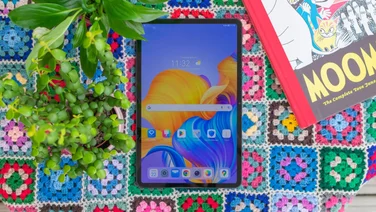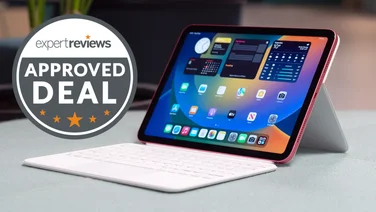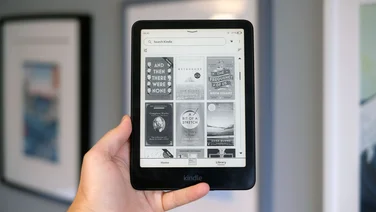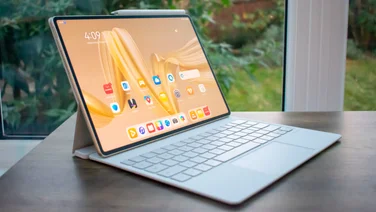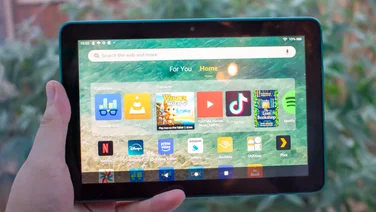To help us provide you with free impartial advice, we may earn a commission if you buy through links on our site. Learn more






Asus is no stranger to 7in tablets, having manufactured the Google Nexus 7. Now Asus has created a 7in tablet of its own, dubbed the FonePad. As the name suggests, it isn’t just a tablet – the Asus Fonepad has a SIM card slot and is able to make calls like a smartphone.

Spot the difference, the Fonepad is a close relative of the Google-branded Nexus 7
It looks very similar to the Nexus 7, although the power and volume keys have switched sides from the right to the left of the device. The Micro USB port and 3.5mm headset audio jack are still on the bottom edge. It also weighs the same as the Wi-Fi-only version of the Nexus 7: 340g.
One difference can be found at the rear of the tablet, as the dimpled soft-touch plastic finish has been replaced with a smooth brushed metal effect cover. There’s also a MicroSD card slot for adding additional storage to the 16GB internal flash storage. This a significant advantage over the non-upgradeable Nexus 7. The cover is held in place tightly and takes two thumbs to push it off, so is unlikely to be dislodged accidentally.

It’s on the inside that Asus has made the major changes. Instead of sticking with an Nvidia Tegra chipset, the FonePad is powered by an Intel Atom Z2420 processor, which is something of a departure from almost all the other 7in devices we’ve seen. Most Android apps now run on Intel hardware, though you might find the odd one still that’s not compatible.
It’s a dual-core chip running at 1.2GHz, paired with 1GB of RAM. It’s very snappy, handling all of Android’s transitions, animations and widgets smoothly, switching between apps with only a tiny delay and responding instantly to touch inputs.
ATOMIC POWER
The benchmark scores don’t completely reflect this. The FonePad managed a respectable 1,545 in the SunSpider JavaScript benchmark, but could only produce a below average 2,215 in 3DMark, which is roughly over 1,000 points less than the Nexus 7’s result. We could still play games smoothly, but it wasn’t quite as smooth as other, more powerful tablets. You also don’t get the graphical effects exclusive to Nvidia’s Tegra chipsets.
Intel’s Atom processor is fairly frugal when it comes to battery life, though. The FonePad lasted an incredible twelve hours and 58 minutes in our battery test, which is among the best results we’ve seen from a smartphone. It can’t compete with the Galaxy Note II’s exceptional 17 hours, but it’s still a great result, and the FonePad lasted almost three hours longer than the Nexus 7.
We’re fairly certain that the FonePad’s 7in, 1,280×800 resolution display is using the same IPS panel found in the Nexus 7, as they’re visually identical when sat side-by-side; at least, they are when you enable Outdoor mode, as Asus limits the backlight brightness in its standard ‘Indoor’ setting.

Having options for the display is an unusual but pleasant inclusion
Colours are vibrant and photos, in particular, look great. At 216 pixels-per-inch, both text and images looked perfectly sharp from an average viewing distance, although if you look very closely you can spot the individual pixel structure. If you aren’t happy with colour temperature, hue or saturation, you can use the Asus Splendid app to adjust image quality to your liking. Sadly, the UK FonePad only has a front-facing 1.2-megapixel webcam for making video calls, not a rear-facing camera.
OLD DROID
Disappointingly, the FonePad runs Android version 4.1.2, rather than the latest 4.2 release found on the Nexus 7. On the plus side, Asus is usually one of the first manufacturers to update its devices to the latest version once Google releases its Android source code, so hopefully an update will be available soon.
Asus has tweaked the default Android user-interface slightly instead of using a completely custom skin. The main customisation is a fourth onscreen soft key, which sits to the side of the Back, Home and Previous apps buttons. It opens a panel containing 12 “mini-apps” that launch over the top of regular ones, letting you open a browser, to-do list or calendar when watching YouTube video or answering email.
There are also a few pre-installed apps, a mix of useful and not-so-useful, including the MS Paint-like MyPainter, MyBitCast, which is used for taking notes, and the Audio Wizard equalizer, which can boost various frequency bands using one of five presets, including Music, Movie, Game, Speech and Recording.

Of course, both the Phone and Messaging apps are here too, as the FonePad will let you send texts and make calls. However, you’ll look a bit silly using it on the train, as it’s so huge. Only larger hands will be able to grip it comfortably in one hand. Also, there’s no proximity sensor, so the display stays on when you lift it to your head. It works best with a Bluetooth headset, although you don’t get one in the box.
Considering the company’s track record, it should come as no surprise that the FonePad is a fantastic budget tablet. It has the same dimensions and display as the Nexus 7, but also the added advantages of better battery life, SIM and MicroSD card slots.
You’re unlikely to use it as a replacement for your smartphone, as the lack of a rear camera and its size make it a little impractical, but if you’re looking for a budget tablet today, your decision just got a lot tougher. Ultimately, if you want 3G and expandable storage, pick the FonePad, but if you prefer to be on the cutting edge, the Nexus 7 will be first in line for the latest versions of Android.


